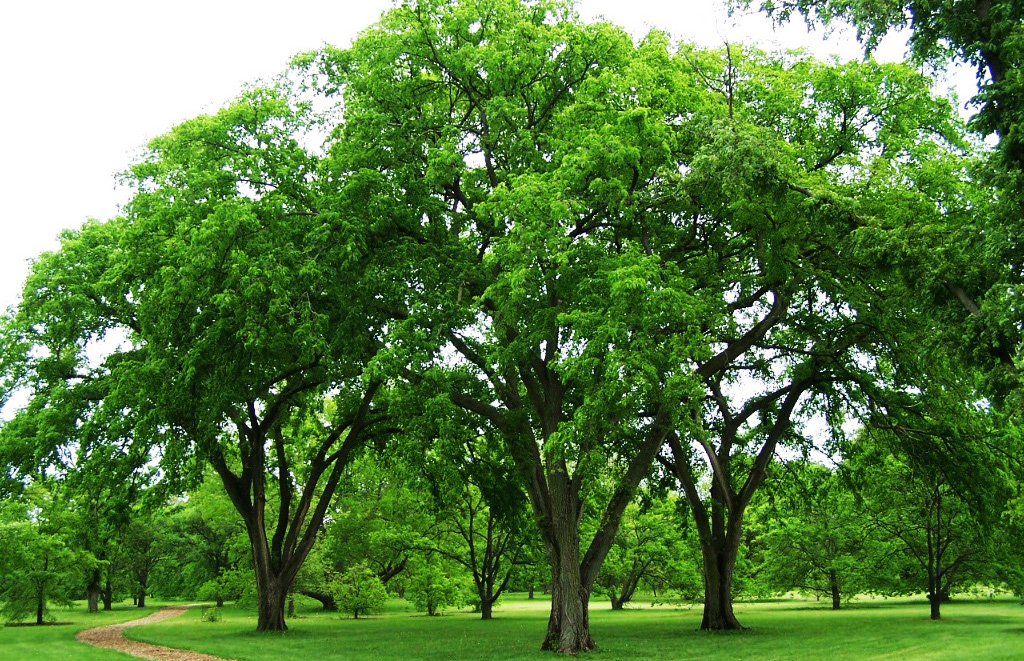
At close to $695 million, the economic impact of the “green” industry in North Dakota doesn’t look that impressive, since most states boast economic impacts in the billions of dollars. However, it looks very impressive when you consider the economic impact on a per-capita basis.
At $960 per resident, North Dakota leads all other states in the per-capita economic impact of landscaping services, greenhouses, nurseries, lawn and garden equipment suppliers, florists and other businesses that fall under the “green” umbrella. That’s based on numbers provided to LawnStarter by the lead author of a new study gauging the industry’s economic impact in 2013.
Nationwide, the green industry wielded an economic impact of nearly $197 billion in 2013 and generated a little over 2 million jobs, according to the study, published in the journal HortTechnology. North Dakota accounted for nearly 7,000 of those jobs.
Alan Hodges says the green industry is “slowly recovering” from the recession.
Photo: University of Florida
An ‘Anomaly’?
The lead author of the study, Alan Hodges, says he and his fellow researchers were “a little surprised” by North Dakota’s lead in the per-capita standings. But he says the state’s No. 1 position is an “anomaly” thanks to North Dakota’s small population and the presence of a handful of big wholesalers in the green industry.
Overall, the study shows the green industry grew from 2011 to 2013 and is “slowly recovering from the Great Recession,” but it hasn’t returned to pre-recession levels, says Hodges, a scientist at the University of Florida’s Institute of Food and Agricultural Sciences.
Aside from Hodges, researchers involved in the study were Charles Hall and Marco Palma, both of Texas A&M University, and Hayk Khachatryan of the University of Florida.
The oil boom spurred home construction in North Dakota.
Photo: Flickr/Consolidated Construction
Boom Time in North Dakota
Mary Holm, executive director of the North Dakota Nursery and Greenhouse Association, says she’s not surprised by the per-capita ranking for North Dakota. She says recent growth in the state’s green industry has stemmed, in large part, from a population surge fueled by the energy boom. With housing construction cranking up to meet the increased demand, North Dakota saw a spike in purchases of sod, trees, plants, flowers and landscaping services, Holm says.
At the peak of the state’s energy boom, all segments of the green industry “did very well,” she says. Although the boom has waned since 2013, Holm says businesses involved in North Dakota’s green industry remain busy, particularly landscaping services.
“I know of several out-of-state landscaping companies that sent crews to North Dakota because there was so much work. Even now, many of the good landscaping companies are booked months in advance with all the work they can handle,” Holm says.
Help Wanted
A major challenge for landscapers and other labor-intensive green businesses in North Dakota is finding good help, she says. Many job openings in the industry continue to go unfilled.
“One of our members is trying to sell the landscaping portion of his horticulture enterprise because he is 69 and can’t find the labor to help him do the heavy work required,” Holm says.
Top ‘Green’ Industry States
Ranked on a per-capita basis, here are the top 15 states for the economic impact of the green industry in 2013.
1. North Dakota
Per-capita economic impact: $960.02
Total economic impact: $694,000,000
Number of jobs: 6,598
Photo: SimpleLandscapes.com
2. South Carolina
Per-capita economic impact: $941.97
Total economic impact: $4,498,000,000
Number of jobs: 37,911
Photo: Lawn-O-Green
3. Florida
Per-capita economic impact: $899.46
Total economic impact: $17,587,000,000
Number of jobs: 197,073

Photo: Florida Landscape Professionals
4. Wisconsin
Per-capita economic impact: $885.66
Total economic impact: $5,086,000,000
Number of jobs: 43,452
Photo: Meissner Landscape
5. Oregon
Per-capita economic impact: $884.09
Total economic impact: $3,475,000,000
Number of jobs: 33,980
Photo: Landscaping Network
6. Connecticut
Per-capita economic impact: $848.33
Total economic impact: $3,051,000,000
Number of jobs: 31,747
Photo: Okie’s Landscaping
7. Vermont
Per-capita economic impact: $845.79
Total economic impact: $530,000,000
Number of jobs: 6,353
Photo: Ambler Design
8. New Hampshire
Per-capita economic impact: $780.06
Total economic impact: $1,032,000,000
Number of jobs: 12,147
Photo: Elf’s Landscaping
9. Kansas
Per-capita economic impact: $774.39
Total economic impact: $2,241,000,000
Number of jobs: 20,262
Photo: Next to Nature Landscape
10. Arkansas
Per-capita economic impact: $770.25
Total economic impact: $2,279,000,000
Number of jobs: 18,086
Photo: All Around Landscaping
11. Maryland
Per-capita economic impact: $733.68
Total economic impact: $4,350,000,000
Number of jobs: 46,706
Photo: Old Field Landscapes
12. Maine
Per-capita economic impact: $706.32
Total economic impact: $938,000,000
Number of jobs: 11,256
Photo: Backyard and Front Yard Ideas
13. Colorado
Per-capita economic impact: $698.13
Total economic impact: $3,678,000,000
Number of jobs: 39,915
Photo: Landscaping Network
14. North Carolina
Per-capita economic impact: $698.11
Total economic impact: $6,875,000,000
Number of jobs: 72,014
Photo: Southern Landscapes
15. California
Per-capita economic impact: $693.90
Total economic impact: $26,599,000,000
Number of jobs: 245,267
Photo: Artscapes
Top photo: The Vanishing Tattoo















